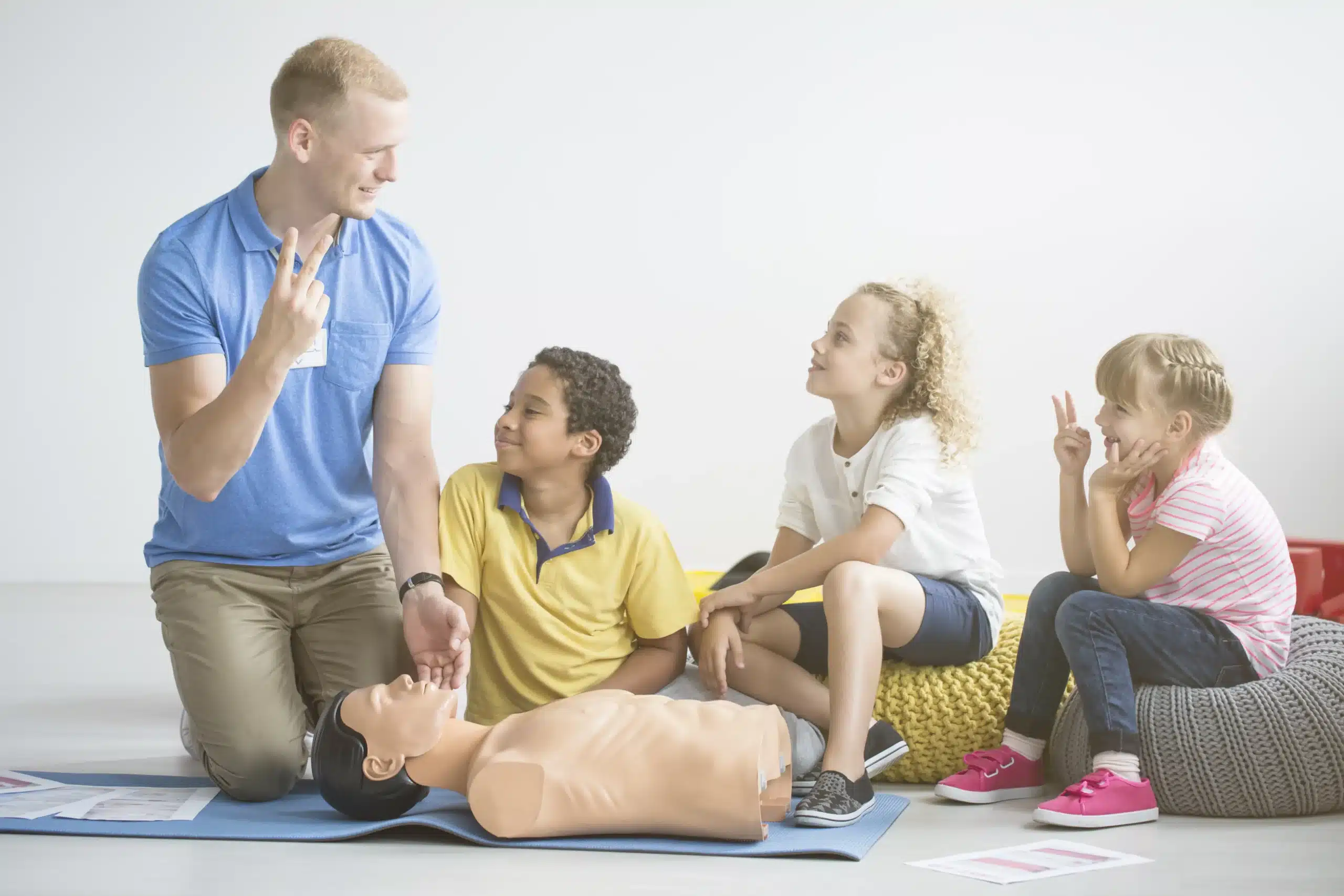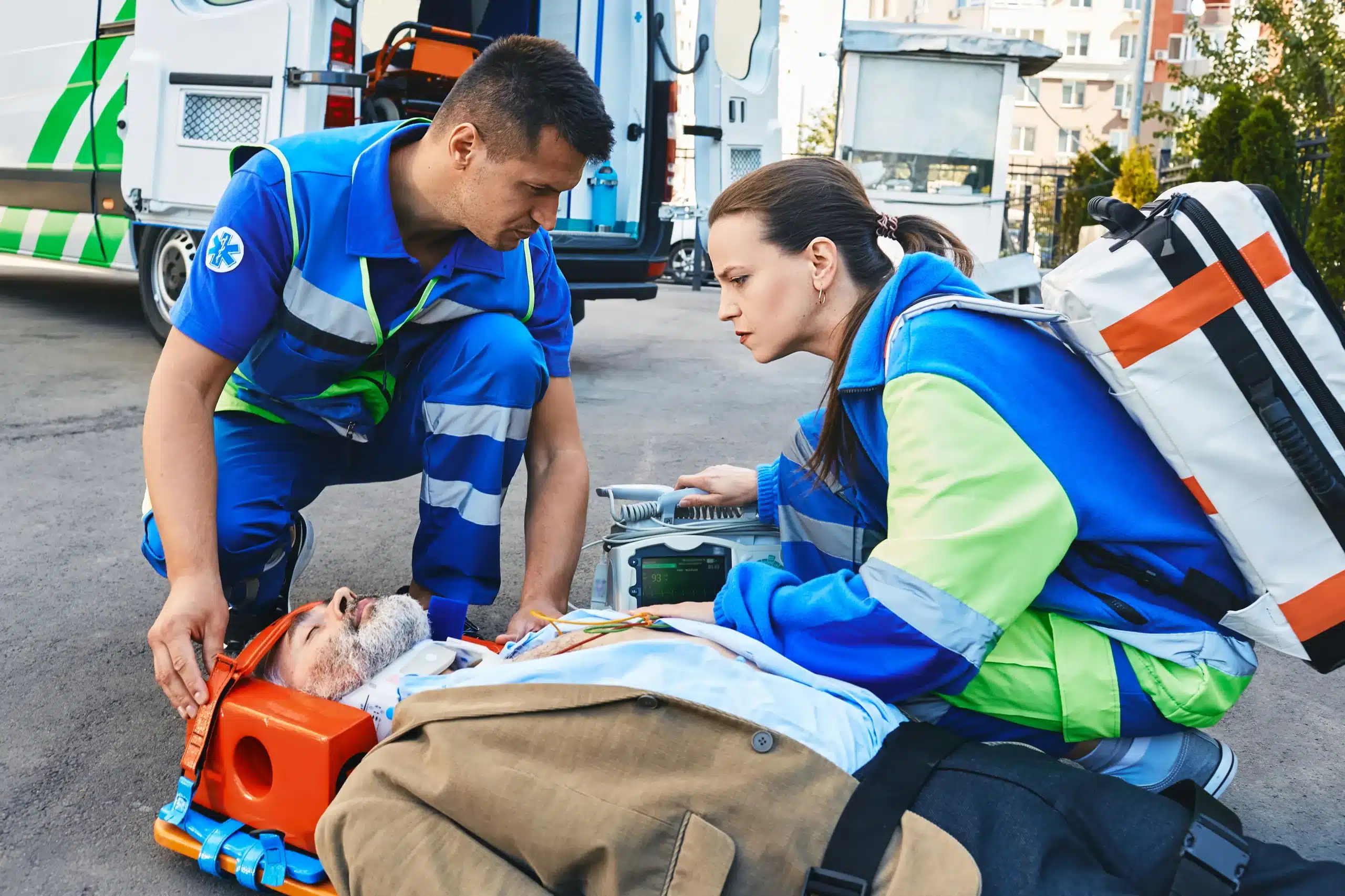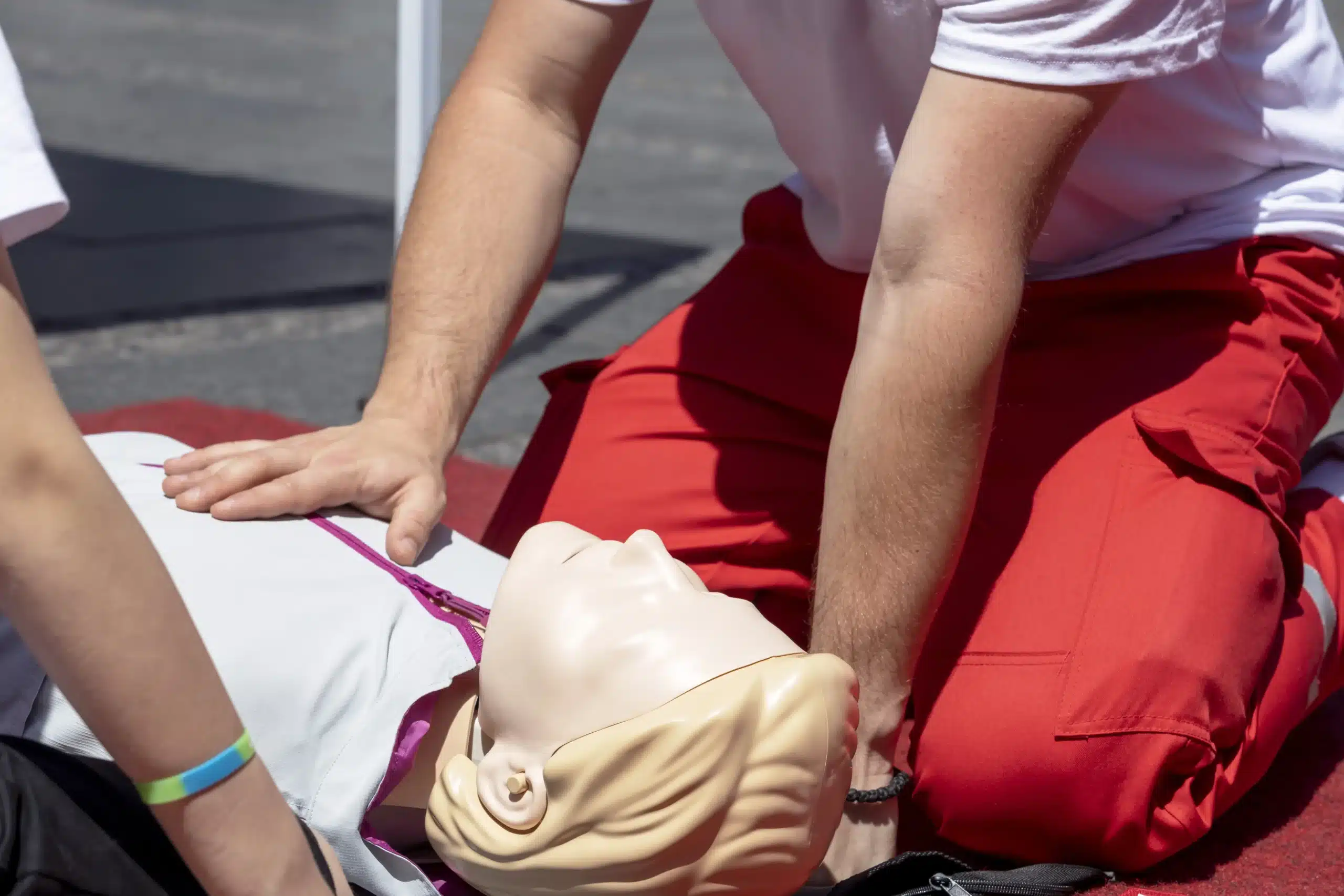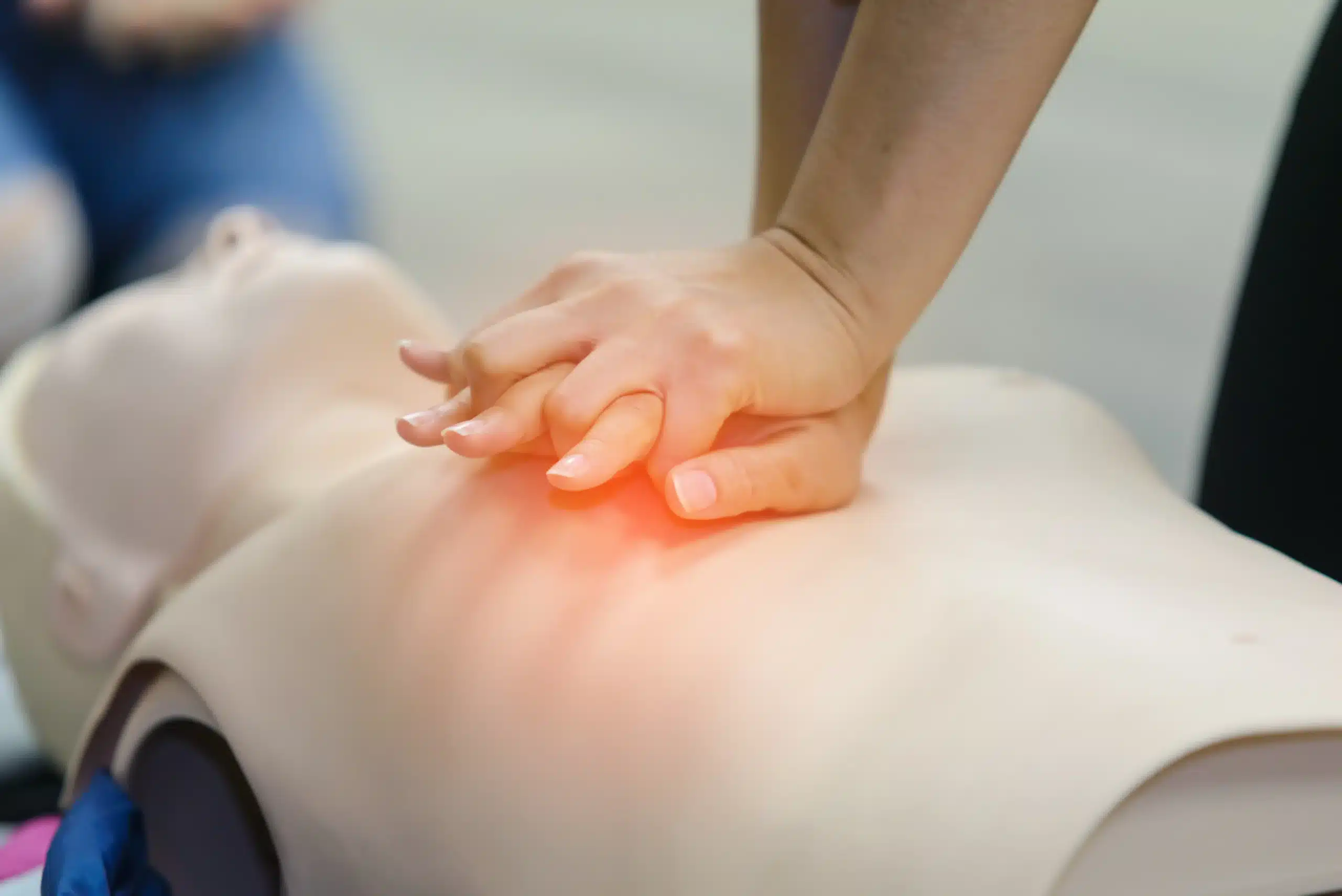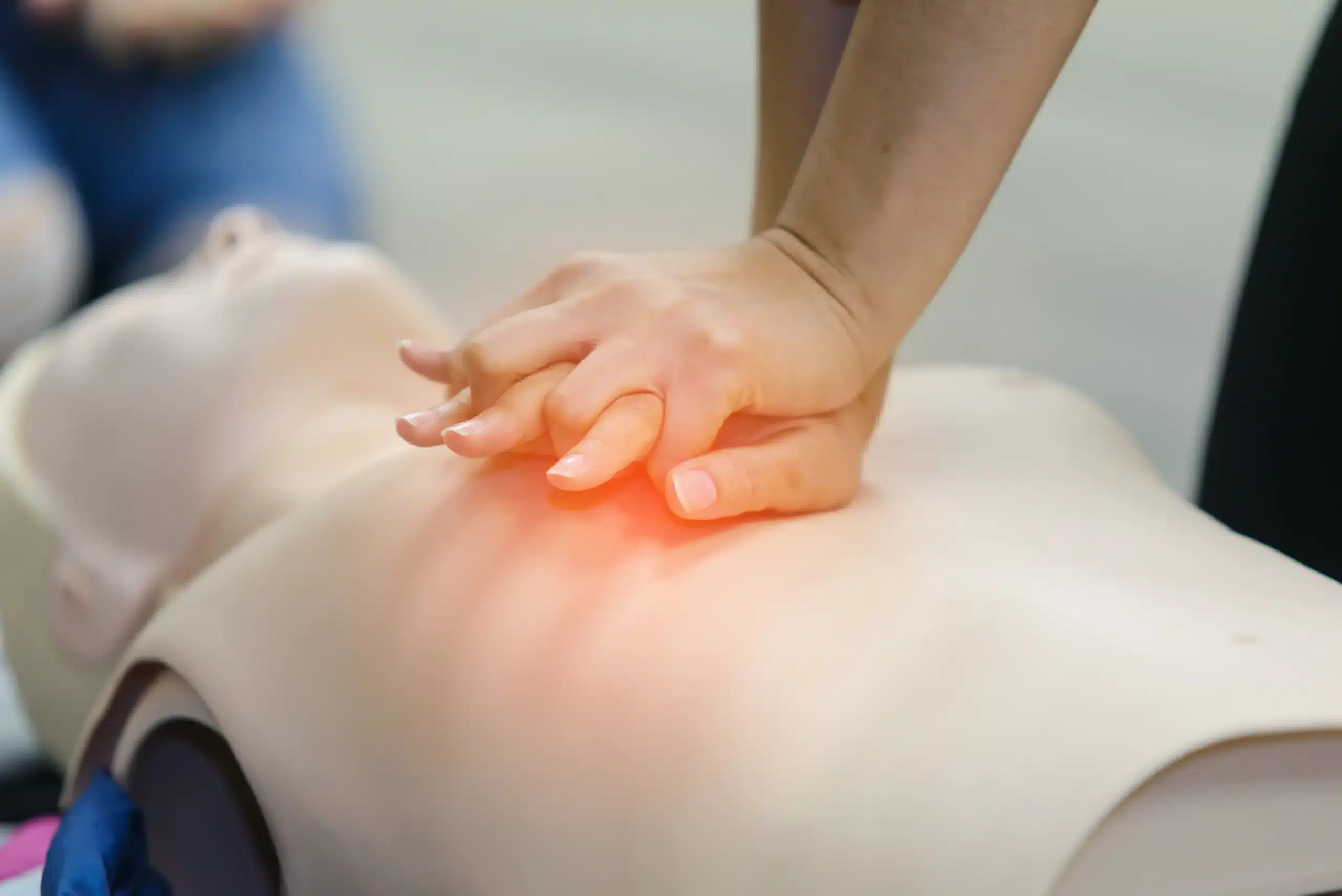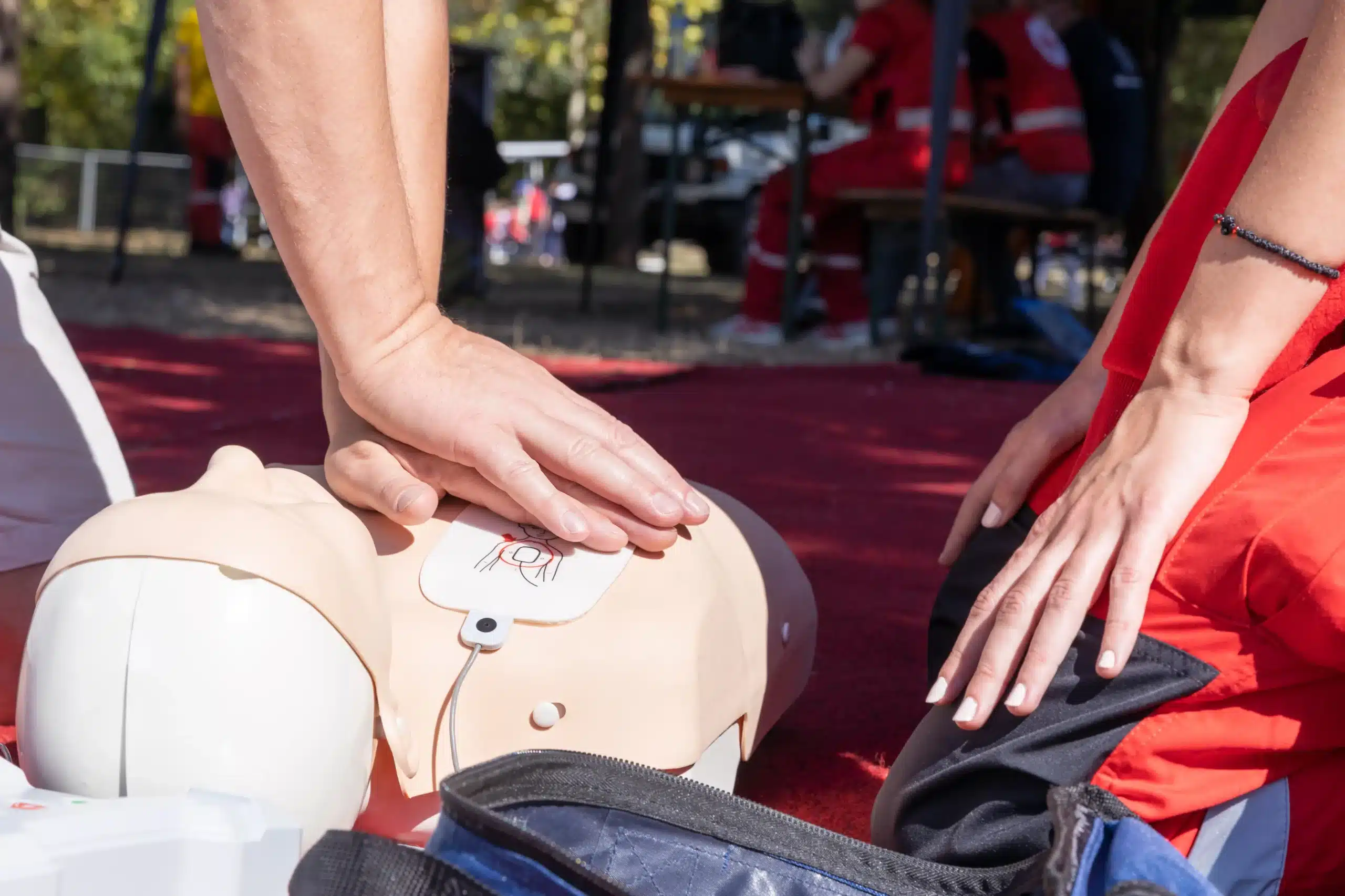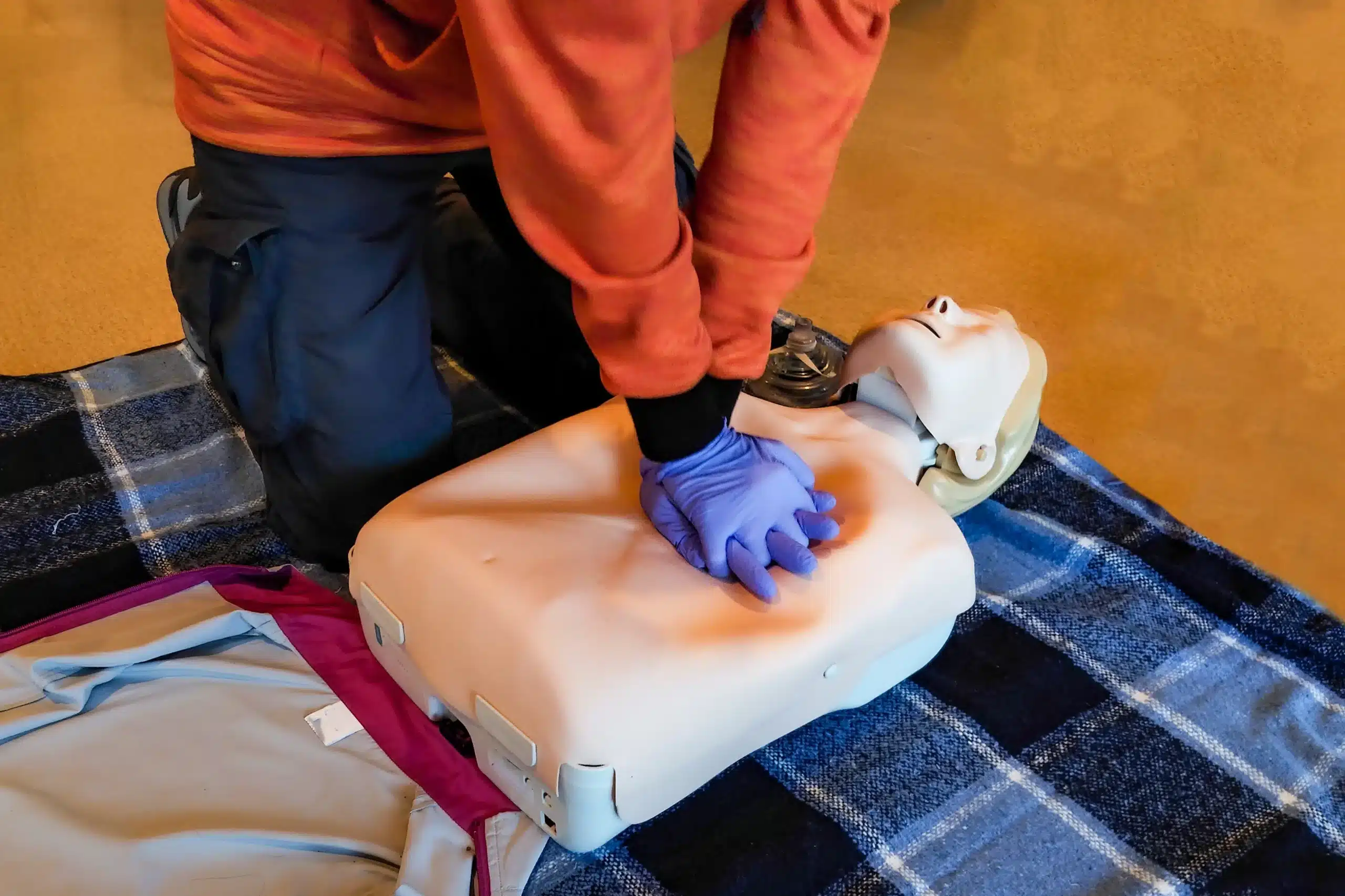Empowering yourself with basic life support skills in Palo Alto is a decision that can have a profound impact on your life and the lives of others. This comprehensive guide will explore the world of BLS, from its core principles to the practical steps for getting certified in Palo Alto. We’ll delve into the essential skills covered in BLS training, including chest compressions, AED operation, and airway management, and discuss the importance of proper technique. Whether you’re pursuing a career in healthcare or simply want to be equipped to handle emergencies, this guide will provide you with the knowledge and resources you need to find the right BLS course in Palo Alto and become a confident first responder.
Key Takeaways
- BLS training provides essential lifesaving skills: Mastering CPR, AED use, and airway management techniques empowers you to respond effectively in medical emergencies.
- Finding the right course ensures quality training: AHA-certified providers, experienced instructors, and hands-on practice are key elements of a comprehensive BLS course.
- BLS certification offers personal and professional advantages: Increased confidence, career advancement opportunities, and the ability to provide critical care in emergencies make BLS training a valuable investment.
What is Basic Life Support (BLS)?
Basic Life Support (BLS) takes standard CPR to the next level. It’s a crucial set of lifesaving skills focused on providing immediate care during life-threatening emergencies like cardiac arrest, respiratory distress, and choking. Think of BLS as a comprehensive toolkit for keeping someone alive until professional medical help arrives. It goes beyond basic CPR to include more advanced techniques for airway management and other critical interventions.
Key Components and Importance
BLS builds on the foundation of CPR by adding essential skills like using an automated external defibrillator (AED) and advanced airway management techniques. It involves a systematic approach, beginning with an initial assessment to determine the best course of action. BLS then focuses on maintaining an open airway, supporting breathing through rescue breaths, and providing chest compressions to circulate blood. These coordinated steps are vital for increasing the chances of survival in critical situations. For a more detailed explanation of BLS components, take a look at this review on Basic Life Support.
Who Needs BLS Training?
While often associated with healthcare professionals, BLS training benefits a much broader audience. Anyone who wants to be prepared to handle a medical emergency can gain from learning these lifesaving skills. This includes teachers, parents, coaches, and other professionals who interact with the public. BLS certification is especially important for healthcare roles, including doctors, nurses, and EMTs. If you’re considering a career in healthcare, BLS training is a smart investment. You can find more information on the benefits of BLS for healthcare providers in this blog post. BLS training empowers individuals to respond effectively in emergencies, potentially saving lives. At Palo Alto CPR Classes, we offer BLS certification courses designed to give you the knowledge and confidence to act quickly and decisively when every second counts.
Find BLS Training in Palo Alto
If you’re searching for “BLS classes near me,” you’re in the right place. Locating a reputable training center is the first step towards BLS certification. Several organizations offer high-quality BLS training in and around Palo Alto.
American Heart Association (AHA) Certified Courses
Choosing an American Heart Association (AHA) certified BLS course sets you up with nationally recognized, evidence-based training. AHA certification is the gold standard for healthcare providers and anyone seeking top-tier instruction. These AHA-certified courses cover essential life-saving techniques, ensuring you’re prepared for various emergencies.
Top BLS Course Providers
Here are a few respected providers offering BLS training in the Palo Alto area:
Safety Training Seminars
Safety Training Seminars offers a comprehensive range of AHA-certified courses, including BLS, ACLS, PALS, and First Aid. They provide convenient daily classes, making it easy to fit training into your schedule. Safety Training Seminars serves Palo Alto, Redwood City, and Menlo Park. They also offer group discounts.
Stanford Health Care
Stanford Health Care also provides AHA-certified BLS training. Their courses equip healthcare professionals with the skills and knowledge needed to deliver effective basic life support.
Bay Area CPR
Bay Area CPR offers convenient, AHA-certified BLS classes in Palo Alto. With various schedules available, they cater to busy professionals and individuals seeking flexible training options. They also use the RQI program.
Initial Training vs. Renewal Courses
Whether you’re new to BLS or looking to recertify, understanding the difference between initial and renewal courses is important. Initial BLS training typically takes around five hours, providing a thorough introduction to core concepts and techniques. Renewal courses, designed for those with existing certification, are shorter, usually about four hours, focusing on refreshing and updating essential skills. Both initial and renewal courses are crucial for maintaining proficiency in BLS.
Learn Essential BLS Skills
BLS certification equips you with the skills to respond effectively during emergencies. These skills are the foundation of BLS and can significantly improve outcomes for victims of cardiac arrest and other life-threatening conditions. Let’s break down these essential skills:
Chest Compressions and Proper Technique
Effective chest compressions are the cornerstone of BLS. You’ll learn the right hand placement, compression depth, and rate to maintain blood circulation. Proper technique maximizes the flow of oxygenated blood to the brain and other vital organs until professional help arrives. This part of your training will cover adult, child, and infant CPR. For example, did you know that the recommended compression depth for adults is at least two inches?
Use an Automated External Defibrillator (AED)
An AED is a portable device that can analyze heart rhythms and deliver a shock to restore a normal heartbeat. BLS training teaches you how to safely operate an AED. You’ll learn the steps for applying the AED pads and delivering a shock if the device advises it. Quick and correct AED use can dramatically increase the chances of survival.
Manage Airways and Rescue Breathing
Airway management is another critical aspect of BLS. You’ll learn techniques for opening the airway and providing rescue breaths. Training covers the use of barrier devices to ensure safe and effective rescue breathing. You’ll also learn bag-mask ventilation techniques for providing assisted breaths when necessary.
Relieve Choking
BLS training also covers how to relieve choking in adults, children, and infants. You’ll learn how to recognize the signs of choking and perform appropriate techniques to dislodge the obstruction. These skills can be life-saving in situations where a person’s airway is blocked. The Heimlich Maneuver is one example of a technique you’ll learn.
Practice with Manikins
Hands-on practice is a key component of effective BLS training. Using manikins allows you to develop muscle memory and gain confidence in performing these skills under pressure. Safety Training Seminars emphasizes hands-on training to ensure you’re fully prepared to respond in a real-life emergency. This practical experience is invaluable for building competence and ensuring you can effectively apply your BLS skills when needed.
Get BLS Certified
So, you’re ready to become BLS certified? Great! Choosing the right Basic Life Support (BLS) course is crucial, especially for healthcare providers. It’s an investment in your career and, more importantly, the lives you touch. Let’s break down how to get BLS certified:
Steps to Obtain BLS Certification
Getting your BLS certification is straightforward. First, find a reputable training provider, like Safety Training Seminars, offering American Heart Association-certified courses. Select a class date and time that fits your schedule. Many providers offer flexible options to accommodate busy professionals. After registering, you’ll receive study materials to review before class. During the course, you’ll learn essential life-saving skills, including CPR, AED use, and airway management. Finally, after successfully completing the course and skills testing, you’ll receive your BLS certification card.
Validity Period and Recertification
Both CPR and BLS certifications are typically valid for two years. This means staying current with the latest guidelines and techniques is essential. Plan to recertify before your certification expires to maintain your skills and preparedness for emergencies. RQI courses offer a flexible and convenient way to stay up-to-date.
Importance for Healthcare Professionals
BLS certification is often a job requirement for healthcare professionals. It signifies your competency in providing immediate care during life-threatening emergencies. BLS goes beyond basic CPR, encompassing additional techniques for cardiac arrest, respiratory problems, and airway obstructions. A current BLS certification demonstrates your commitment to patient safety and high-quality care, providing the confidence and skills to respond effectively in critical situations.
BLS Training Costs in Palo Alto
Knowing the cost of BLS training is a practical first step. While prices can fluctuate, most providers in the Palo Alto area aim for competitive rates. Let’s break down what influences those prices and how you can find the best value.
Average Course Prices
BLS course fees in Palo Alto are generally in line with national averages. You’ll likely find courses ranging from $70 to $100, though this can shift based on the provider and what’s included. Some providers, like Safety Training Seminars, emphasize their commitment to low prices, so it’s always a good idea to compare options. Don’t hesitate to call around and ask for specifics—a little research can save you money.
Factors Affecting Prices
Several things can influence the final price tag on your BLS training. The type of course—initial certification or recertification—often plays a role. Also, consider the format. In-person training sometimes includes costs associated with the training facility and equipment. If you have any physical limitations, discuss them with the provider upfront. They can help you find a course that accommodates your needs, which might affect the overall cost. Finally, check the rescheduling policy. Some providers charge fees for changing your class date, so factor that into your decision.
Group Discounts and Special Offers
If you’re training with a group, look for discounts. Many providers offer reduced rates for companies, community organizations, or even just a group of friends signing up together. This can be a smart way to lower the cost per person. Safety Training Seminars, for example, specializes in group discounts and can even bring the training to your location, making it even more convenient and potentially cost-effective.
Price Match Guarantees
Some providers offer price match guarantees, promising to meet or beat competitor pricing. This can be a helpful way to ensure you’re getting a fair price. Always compare options and ask about any guarantees before you commit to a course. It never hurts to ask!
Choose the Right BLS Course
Finding the right BLS course means considering a few key things to ensure you receive top-notch training that fits your needs and prepares you for real-life situations. Here’s what to look for:
Accreditation and Instructor Qualifications
First, confirm the course is American Heart Association (AHA) certified, the gold standard for CPR and BLS training. AHA certification ensures the course content follows the latest guidelines and best practices. Also important are the instructor’s qualifications. Experienced, certified instructors make for a better learning experience and offer valuable insights. Our instructors at Safety Training Seminars are not only AHA-certified but also have years of practical experience.
Class Size and Hands-on Practice
Effective BLS training emphasizes hands-on learning. Look for courses with a reasonable class size that allows for individual attention and plenty of practice time on manikins and with simulation equipment. A smaller class ensures you get personalized feedback and can ask questions easily. Many courses now offer blended learning, combining online modules with in-person skills sessions. This offers flexibility while still providing crucial hands-on training.
Scheduling Options
Your schedule shouldn’t prevent you from getting certified. Choose a provider with various class times and dates, including weekend and evening options. Safety Training Seminars offers daily classes, and we can even do group classes at your location for extra convenience.
Course Duration and Format
BLS courses usually run from two to five hours, depending on whether you’re taking an initial or renewal course. Initial BLS courses are typically longer, covering a wider range of topics and skills. Renewal courses are shorter, focusing on a refresher and demonstrating competency. Think about your current skill level and what your profession requires when choosing a course format and length. Some providers, like Stanford Health Care, offer both initial and renewal courses, each designed for specific learning goals.
Prepare for Your BLS Course
Getting ready for your BLS course involves understanding the training, preparing physically, and knowing how to make the most of your learning experience. Here’s what you should know:
What to Expect During Training
Your BLS course will combine instruction, demonstrations, and hands-on practice. Expect to learn the latest techniques for CPR, AED use, and airway management. You’ll work with training manikins and practice realistic scenarios. Active participation is key, so come prepared to ask questions and engage with the instructor and your fellow students. Choosing the right Basic Life Support (BLS) course is crucial for healthcare providers.
Physical Requirements
BLS training involves physical activity, primarily performing chest compressions on manikins. While modifications can be made for some limitations, it’s important to be aware of the physical demands. If you have any concerns about your ability to participate fully, contact Safety Training Seminars to discuss your situation. Rescheduling is always an option.
Tips for Success
Want to ace your BLS skills test? Watch any pre-course videos provided by your instructor. This can significantly increase your chances of passing. During the test itself, pay close attention to the stop icon and count out loud during compressions to maintain the correct rhythm. These simple steps can make a big difference.
Resources for Ongoing Skill Maintenance
Maintaining your BLS skills is crucial. Regularly review the course materials and consider refresher courses to stay up-to-date. You can also find valuable resources and support from organizations like the American Heart Association. Reading testimonials from past students can also offer insights into the effectiveness of different training programs.
BLS Training: Impact and Career Benefits
BLS training goes beyond the classroom—it equips you with practical skills and knowledge applicable to various real-world scenarios. Whether you’re a healthcare professional, a caregiver, or simply someone who wants to be prepared, understanding the impact and career benefits of BLS can be truly empowering.
Apply BLS Skills in Real-World Situations
BLS skills are invaluable in emergencies. From assisting a family member at home to responding to an incident in a public place, your training can make a critical difference. Choosing the right Basic Life Support (BLS) course is crucial, especially for healthcare providers. It’s an investment in your career and the lives you touch. Knowing how to assess a situation, perform CPR, and use an AED can significantly improve outcomes in life-threatening situations.
Advance Your Career with BLS
Many healthcare professions require BLS certification. Earning this credential demonstrates your commitment to patient safety and enhances your professional credibility. The value of AHA certification is undeniable, both for personal preparedness and career advancement. BLS certification can open doors to new opportunities and may increase your earning potential. It also shows employers you’re dedicated to maintaining high standards of care.
Gain Confidence in Emergencies
BLS training not only provides you with essential skills but also instills confidence in your ability to respond effectively under pressure. Comprehensive BLS courses often combine lectures, videos, and hands-on practice, leading to an AHA BLS-HCP course completion card. This hands-on experience, combined with theoretical knowledge, empowers you to act decisively and calmly during emergencies, potentially saving lives. Knowing you have the skills to handle a crisis can reduce anxiety and improve your overall preparedness.
Related Articles
- BLS Certification in Palo Alto: A Comprehensive Guide
- BLS for Healthcare Providers in Palo Alto: Complete Guide
- BLS Classes in Palo Alto: Your Complete Guide – Palo Alto CPR Classes
- BLS Renewal in Palo Alto: Your Easy Guide – Palo Alto CPR Classes
- BLS HeartCode Palo Alto: Your Complete Guide – Palo Alto CPR Classes
Frequently Asked Questions
What’s the difference between BLS and CPR? CPR is the core of BLS, focusing on chest compressions and rescue breaths. BLS builds upon CPR by adding skills like using an AED, advanced airway management, and a more systematic approach to patient assessment. Think of BLS as a more comprehensive toolkit for responding to medical emergencies.
I’m not in healthcare. Why should I get BLS certified? BLS training benefits anyone who wants to be prepared for a medical emergency. While crucial for healthcare professionals, these skills are valuable for teachers, parents, coaches, or anyone who interacts with the public. Knowing how to respond in a crisis can make a real difference before professional help arrives.
How do I find a BLS class near me? Start by searching online for “BLS classes near me” or checking with local hospitals, training centers, or organizations like the American Heart Association. Look for providers offering AHA-certified courses to ensure you receive high-quality, up-to-date training. Make sure to compare prices, schedules, and class formats to find the best fit for your needs.
How much does BLS certification cost, and how long does it last? BLS course costs typically range from $70 to $100, depending on the provider and course format. Certification is usually valid for two years. Many providers offer discounts for groups, so inquire about those if you’re training with colleagues or friends. Remember to factor in recertification costs when planning your training budget.
What if I have physical limitations? Can I still take a BLS course? Absolutely. If you have any physical limitations, discuss them with the training provider beforehand. They can often adapt the training to accommodate your needs or suggest modifications to certain techniques. Don’t let physical limitations prevent you from learning these life-saving skills.
